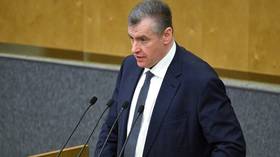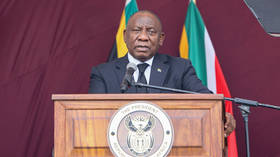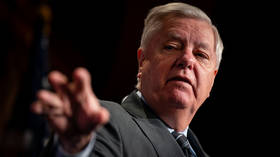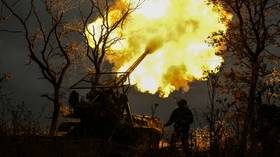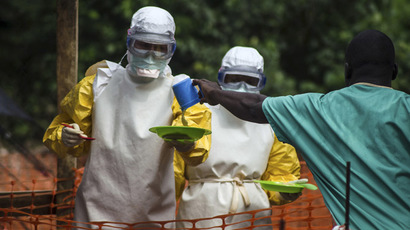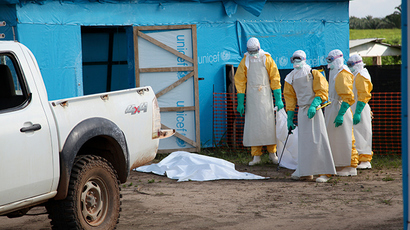US predicts Ebola could infect 1.4 mn by end of January
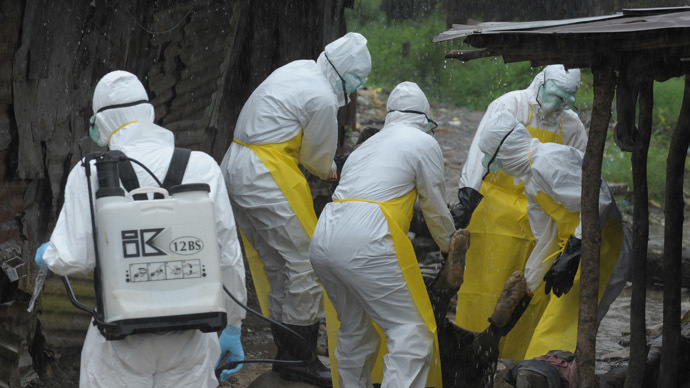
Ebola infections in West Africa could hit 1.4 million by the end of January if current trends continue and no immediate, large-scale increase in response measures is taken, the US Centers for Disease Control and Prevention said in a new estimate.
“Extrapolating trends to January 20, 2015, without additional interventions or changes in community behavior,” such as safety improvements for burial practices, CDC researchers said the number of Ebola cases in Liberia and Sierra Leone could be anywhere from 550,000 to 1.4 million.
“The findings in this report underscore the substantial public health challenges posed by the predicted number of future Ebola cases,” the CDC wrote. “If conditions continue without scale-up of interventions, cases will continue to double approximately every 20 days, and the number of cases in West Africa will rapidly reach extraordinary levels.”
The estimate report released Tuesday is said to be the agency's tool that aims to help with efforts to slow the spread of the deadly epidemic while planning ahead for future scenarios, according to The Washington Post. The number of Ebola cases in West Africa is being severely underreported, researchers say, by a factor of 2.5 in Sierra Leone and Liberia. Using the new estimate measures, researchers predict that around 21,000 total Ebola cases will have occurred in those two nations by Sept. 30.
Meanwhile, reported cases in Liberia and Sierra Leone are doubling every 20 days or so, according to researchers.
CDC Director Tom Frieden warned that the agency’s estimates in the report do not include actions or plans announced in August by the United States and the international community.
“We anticipate that these actions will slow the spread of the epidemic,” he said in a statement. The report’s estimates are based on data available in August and “reflect a moment in time before recent significant increases in efforts to improve treatment and isolation.”
The CDC projections will help Ebola response planners to make informed decisions regarding emergency measures to help control the outbreak, he said.
“It is still possible to reverse the epidemic, and we believe this can be done if a sufficient number of all patients are effectively isolated, either in Ebola Treatment Units or in other settings, such as community-based or home care,” he said. “Once a sufficient number of Ebola patients are isolated, cases will decline very rapidly – almost as rapidly as they rose.”
The World Health Organization’s official count for the outbreak has reached over 5,800 people infected and 2,800 dead. Though the WHO said Tuesday that “the true numbers of cases and deaths are certainly higher,” and that the number of cases could quadruple to more than 20,000 by early November.
And in more ominous revisions, 70 percent of patients are dying, representing another increase over previous estimates of a 50 percent death rate. In previous, smaller scale outbreaks, up to 90 percent of those infected died.
Slowing the spread of the disease is predicated on getting sick patients into hospitals treatment facilities where there is reduced risk of transmission, officials say. Yet, many hospitals are closed, and other facilities are at capacity to the point that they have turned patients away.
The CDC said that for the epidemic to slow and eventually stop, about 70 percent of infected patients need to have proper isolation and treatment. But health officials and workers say only a small fraction of the infected are receiving proper care.
The CDC’s report also weighed in on cost of delay. Every month that at least 70 percent of patients aren’t given proper treatment will result in a tripling of the number of daily cases.
The US recently pledged $750 million to set up treatment facilities in Liberia. The US is also sendingthousands of troops to West Africa, and will set up a military command center in the Liberian capital of Monroviato to coordinate the aid operation.
The United Nations Security Council voted last week to create an emergency medical mission to respond to the Ebola outbreak. WHO, meanwhile, has begun an effort to get infected people out of their homes and into treatment centers that provide rudimentary care.
Health officials say treatment units must be the priority, but those facilities can’t arrive fast enough. For instance, Washington’s promise of 1,700 new treatment bed could take weeks or months to be operational.
CDC researchers warned that their findings in the report are subject to change, as a host of factors could affect projections of the epidemic’s ongoing strength. Cross-border flight in the region or fluctuating incubation periods for patients, for example, could be cause for correction. Regional differences in underreporting of cases “might mean that using one correction factor across an entire country is inappropriate,” they added.



